featured
Missouri Official Says New Marijuana Testing Protocol Shouldn’t Disrupt Businesses
Published
19 hours agoon

“The supply chain will remain intact. You’ll be able to move that material in and out freely, and you should do so.”
By Rebecca Rivas, Missouri Independent
The head of Missouri’s cannabis testing unit said the new unannounced visits to collect product samples shouldn’t impact business, in a podcast by the Missouri Cannabis Regulation Division.
“This is going to be just another arm of compliance, guys,” said Ryan Bernard, the division’s testing and research unit manager. “So keep this business as usual 100 percent of the time.”
On July 1, cannabis regulators began arriving unannounced at licensed cultivation and manufacturing facilities to collect products off the shelves. They’ll take them to the Missouri State Public Health Reference Laboratory to be tested for things like mold, pesticides and a whole range of other things.
Bernard said the process will not disrupt production, and it will be paid for by “either by DCR’s budget or state public health lab’s budget.”
“The supply chain will remain intact,” he said, “You’ll be able to move that material in and out freely, and you should do so.”
His team is looking to sample four to seven grams of final finished marijuana goods. If a package has more than four to seven grams, he said then they’ll take the whole package.
“I just want to reiterate that it’s going to start as one tag per facility, meaning that we’re not looking to take 10 tags from a single facility,” Bernard said. “Then as the infrastructure is developed at the state public health lab, we’ll slowly start increasing that out.”

Bernard said he’ll be randomly selecting based on the inventory listed in the state’s seed-to-sale tracking system called Metrc.
“If it’s today, I would go into our seed-to-sale system, pull your inventory down and then just randomly select a sample to come to your facility to take,” he said.
If a product fails at the reference lab, he said his team will return to the facility to collect a “full representative sample.”
“If that product fails at that point, we’re going to initiate an investigation,” he said. “If the material is no longer available at the originating facility, at that point, we may sample from dispensaries.”
Like most states, all testing of Missouri cannabis products occurs at private labs that have been licensed by the state. This is the division’s first attempt to double check the work of licensed testing labs tasked with ensuring the safety of Missouri marijuana products.
Lawmakers began allocating money for this kind of sampling to be tested at the state laboratory in the fiscal year that began on July 1, 2024 with $3.8 million. Most of it went unspent because the cannabis testing methods were “still in the process of being implemented,” according to state budget documents. Another $2.4 million was allocated for the current fiscal year, and it’s unclear how much of it has been spent.
States across the nation are taking similar proactive steps to establish reference laboratories to verify private laboratory cannabis testing, according to the division’s July press release announcing the testing.
“This reference lab will be a pivotal step forward in the evolution of reliable, science-based cannabis testing protocols,” said Amy Moore, the division’s director. “We are grateful for all the expertise and collaboration from many state and national partners, especially from the Missouri State Public Health Laboratory, that helped launch this initiative for Missouri.”

Author: mscannabiz.com
MScannaBIZ for all you Mississippi Cannabis News and Information.
You may like
-
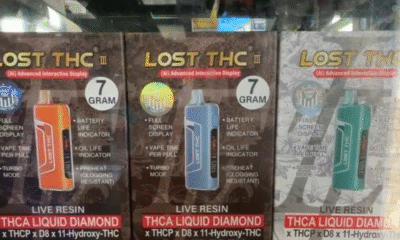

Mississippi AG takes aim at hemp products, including Delta THC | TN State News
-
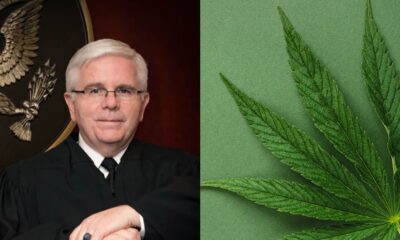

DEA Judge Overseeing Cannabis Rescheduling Hearing Set to Retire
-


North Mankato city council postpones decision on cannabis dispensary
-


Marijuana Prohibition Is And Always Has Been A Sham
-
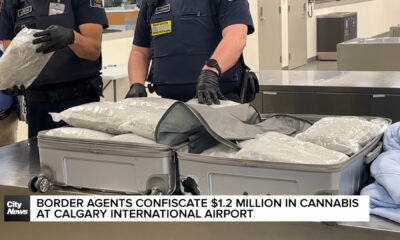

Border Agents confiscate $1.2 million in cannabis at Calgary International Airport
-


The best grow lights of 2025 by Leafly
featured
DEA Judge Overseeing Cannabis Rescheduling Hearing Set to Retire
Published
18 minutes agoon
July 23, 2025
The Drug Enforcement Administration (DEA) judge who was tasked with overseeing a Biden administration proposal to reschedule cannabis is set to retire on Aug. 1.
John J. Mulrooney II, the agency’s chief administrative law judge, notified the hearing’s designated participants on July 23 that he will no longer have jurisdiction over the case come the end of next week.
“My retirement will leave the DEA with no Administrative Law Judge to hear this matter or any of the Agency’s other pending administrative enforcement cases,” Mulrooney wrote. “The Controlled Substances Act requires that DEA administrative enforcement hearing proceedings must be conducted in accordance with the Administrative Procedure Act and presided over by an Administrative Law Judge.”
The current hearing process, to debate the merits of a proposal to reclassify cannabis from a Schedule I to a Schedule III drug under the Controlled Substances Act (CSA), has been stayed since Jan. 13, 2025, when Mulrooney granted an interlocutory appeal amid claims from pro-rescheduling parties that the DEA conducted improper communications with anti-rescheduling participants.
Mulrooney has retained limited jurisdiction over the case during the past six months to provide rulings on non-dispositive, procedural motions, such as certain participants dropping out of the process, and others seeking alternative counsel.
However, during the past six months, the hearing process has remained delayed in the absence of the DEA administrator fixing a briefing schedule to allow for the designated participants to weigh in on the matter, as Mooney ordered.
Derek S. Maltz was the DEA’s acting administrator from Jan. 21 until early May, when he stepped down, and Robert Murphy was the acting administrator until July 21, when the Senate confirmed President Donald Trump’s nominee, Terrance Cole, to head the agency.
That said, the fate of the hearing process is now in Cole’s hands.
“Until there is a change in this circumstance, all matters filed in this case will be forwarded to the DEA Administrator, for whatever action, if any, he deems appropriate,” Mulrooney wrote in his retirement announcement July 23. “All previously-issued procedural orders remain in full force and effect unless otherwise modified by a successor Administrative Law Judge, the DEA Administrator, or the Attorney General.”
Cole told U.S. senators during his April confirmation hearing that “it’ll be one of my first priorities” to review where the DEA is in the administrative process to reschedule cannabis upon being confirmed.
However, Cole provided no promises on the Schedule III proposal that was recommended by former President Joe Biden’s U.S. Department of Health and Human Services and published in the Federal Register after former Attorney General Merrick Garland signed off on a notice of proposed rulemaking. Biden’s DEA never backed the proposal.
While Mulrooney is retiring, his vacancy isn’t expected to further delay the cannabis rescheduling hearing process: That ball is currently in Cole’s court.
“Naturally, I wish all the parties the best in resolving this important issue in a fair, transparent, and accurate manner, and extend my heartfelt gratitude to the parties and their representatives for their sincere, diligent, and indefatigable advocacy,” Mulrooney wrote.
Mulrooney called attention to the DEA’s lack of transparency under the Biden administration early on in the hearing process, specifically pointing to former Administrator Anne Milgram’s secretive selection process for the 25 designated participants in October 2024.
It took a lawsuit from a party that was excluded from the process to shed light on the DEA selections. The lawsuit provided a record that the DEA sent “cure letters” to several anti-rescheduling entities, providing them the opportunity to submit supplemental information showing that they met the “interested person” status under the Administrative Procedure Act.
“The government’s failure to acknowledge in any way the gravity of the highest levels of its organization allegedly reaching out to help one of the potential DPs fortify its application to ease the task of justifying its apparently pre-made determination for appeal demonstrates an arrogant overconfidence that may not serve it well in the future,” Mulrooney wrote in his January order granting the interlocutory appeal.

Author: mscannabiz.com
MScannaBIZ for all you Mississippi Cannabis News and Information.

Since its inception, efforts to criminalize the marijuana plant and stigmatize those who consume it have been predicated almost entirely upon gross exaggerations, racial stereotypes, and outright lies.
The initial push for cannabis criminalization, which began in earnest more than a century ago, had little to do with promoting public health or safety. Instead, the decision to target and prosecute cannabis users was fueled by xenophobia and media sensationalism.
For instance, a July 6, 1927 story in the New York Times, headlined “Mexican Family Goes Insane,” farcically claimed: “A widow and her four children have been driven insane by eating the marihuana plant, according to doctors, who say there is no hope of saving the children’s lives and that the mother will be insane for the rest of her life.”
An academic paper titled “Marijuana,” published in 1933 in The Journal of Law and Criminology, similarly made over-the-top allegations about the plant’s supposed dangers. The authors wrote, “The inevitable result [of consuming cannabis] is insanity, which those familiar with it describe as absolutely incurable, and, without exception, ending in death.”
In 1937, Harry J. Anslinger — America’s first ‘Drug Czar’ — successfully lobbied Congress to ban cannabis nationwide. He did so through the continuous use of racist rhetoric. “There are 100,000 total marijuana smokers in the U.S., and most are Negroes, Hispanics, Filipinos, and entertainers. Their Satanic music, jazz and swing, result from marijuana use,” he asserted. “This marijuana causes white women to seek sexual relations with Negroes, entertainers, and any others.”
Fast-forward to 1971. That’s when the Nixon administration declared drug abuse to be “public enemy number one.” The lynchpin of this campaign was stamping out the use of marijuana, which Congress had just classified as a Schedule I controlled substance — the strictest federal category available. Yet, privately, Nixon acknowledged that he did not think cannabis was “particularly dangerous,” and he lamented the “ridiculous” penalties faced by those arrested for possessing it.
Nonetheless, his administration publicly doubled down on the mythical marijuana threat for its own political gain. As his domestic policy chief, John Ehrlichman, later acknowledged, “We couldn’t make it illegal to be either against the (Vietnam) war or Black,” but we could get “the public to associate the hippies with marijuana and Blacks with heroin.”
By “criminalizing both heavily,” Ehrlichman explained, “we could disrupt those communities. We could arrest their leaders, raid their homes, break up their meetings, and vilify them night after night on the evening news.”
“Did we know we were lying about the drugs?” he asked. “Of course we did.”
Fifty-plus years and nearly 30 million marijuana-related arrests later, cannabis remains categorized as a Schedule I controlled substance — the same classification as heroin — and many politicians and prohibitionists continue to reiterate many of these same myths. Yet, despite their claims, mounting evidence affirms that cannabis is not a ‘gateway drug,’ it doesn’t sap users’ motivation, it doesn’t make consumers violent, and it doesn’t make them crazy.
Slowly but surely, the public is learning and accepting the truth.
Survey data compiled by the Pew Research Center finds that only about one-in-ten Americans support the federal government’s blanket criminalization of marijuana. Moreover, according to Gallup, 70 percent of U.S. adults think “the use of marijuana should be legal.”
That’s an increase of 19 percentage points since 2014 when Colorado and Washington became the first states to implement adult-use cannabis legalization. Twenty-four states have now done so — and no state has ever repealed marijuana legalization. In short, the more familiar the public becomes with legalization through first-hand experience, the more they like it. And the less likely they are to believe longstanding prohibitionist rhetoric and lies.
After nearly a century of canna-bigotry, the truth couldn’t be clearer. Marijuana prohibition has been a fraud from the beginning — often propagated by politicians and bureaucrats who were in on the sham. It’s high time we end it.
Paul Armentano is the Deputy Director of the National Organization for the Reform of Marijuana Laws, America’s oldest cannabis consumers’ lobby. To become a member of NORML or to support NORML’s efforts, please consider making a donation here.
This article is from an external, unpaid contributor. It does not represent High Times’ reporting and has not been edited for content or accuracy.
Photo by PumpkinButter via WikiMedia Commons

Author: mscannabiz.com
MScannaBIZ for all you Mississippi Cannabis News and Information.
featured
Appeals Court Vacates Conviction Over Marijuana User’s Gun Ownership, Noting Lower Court Didn’t Find His Use Caused A Threat
Published
2 hours agoon
July 23, 2025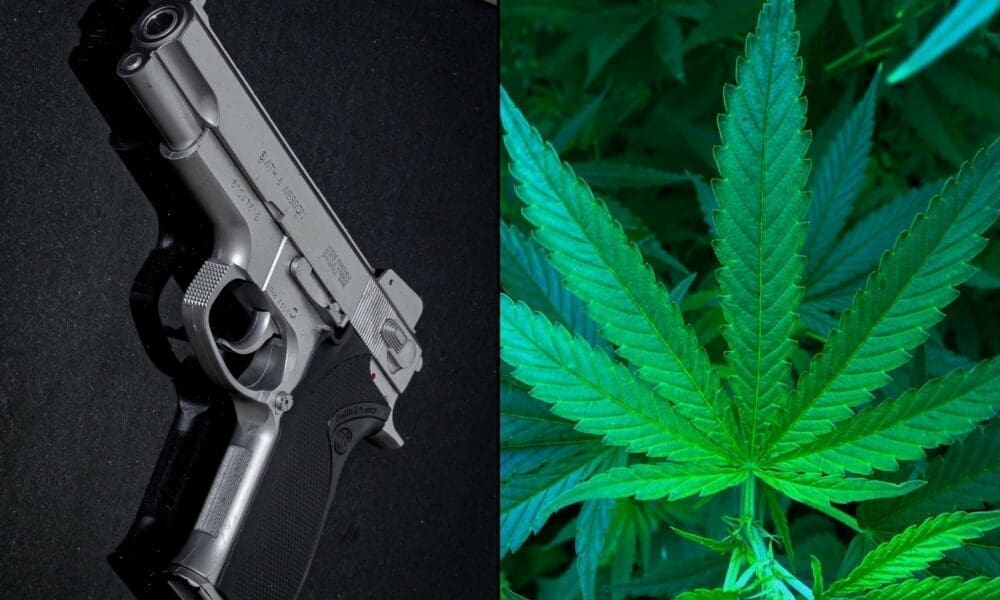
In yet another federal court ruling questioning the U.S. government’s blanket ban on firearm possession by marijuana users, an appeals court on Tuesday vacated a defendant’s conviction under the statute known as Section 922(g)(3) and remanded the case back to a district court, noting that a retrial before a jury may be necessary to determine whether cannabis in fact caused the defendant to be dangerous or pose a credible threat to others.
In a 14-page opinion, a three-judge panel for the U.S. Court of Appeals for the Eighth Circuit noted that after an Iowa district court initially decided the case, the appeals court issued new guidance in a February ruling that said the prohibition on gun ownership by drug users is justified only in certain circumstances—not always.
In returning the current case—U.S. v. Cordova Perez—to the Southern District of Iowa, judges said the lower court failed to make a determination as is now required in the Eighth Circuit as to whether defendant Aldo Ali Cordova Perez Jr.’s marijuana use made him a credible threat to public safety.
“The proper question is whether Cordova Perez’s marijuana use caused him to act in an outwardly erratic or aggressive manner that would, in context, be reasonably perceived as disturbing or dangerous to others,” says the opinion, written by Circuit Judge Jane L. Kelly, an Obama appointeee.
While the ruling says the district court “did not make any such causal finding in this case,” it suggests that establishing such a relationship might not necessarily require evidence that Cordova Perez’s cannabis made him violent or commit conduct with a gun specifically.
“If marijuana caused Cordova Perez to act or drive in an erratic way, for example, he might be disarmed constitutionally under § 922(g)(3) even if his outward behavior was not violent in the same way as, perhaps, the ‘combative hostility’ sometimes associated with ‘a drug like PCP,’” the opinion says.
“Even if Cordova Perez normally used marijuana without issue,” it adds, “marijuana could have triggered a single erratic or dangerous episode.”
Judges also said in the new opinion that the lower court’s decision in the case didn’t make any factual findings that the defendant’s “marijuana use—either that day or more broadly—caused him to ‘induce terror, or pose a credible threat to the physical safety of others with a firearm.’”
“Nor did the district court ask if Cordova Perez’s marijuana use placed him in a category of people ‘present[ing] a special danger of misuse’ sufficient to justify disarmament irrespective of any individualized showing of dangerousness,” the decision adds.
Such a finding would be necessary under current precedent requiring that to be constitutional, a statute restricting gun rights from a broad class of Americans must be sufficiently similar to historical restrictions, such as preventing firearm possession by people with mental illness.
“We have already held that without more, neither drug use generally nor marijuana use specifically automatically extinguishes an individual’s Second Amendment right,” the panel wrote, referencing Cooper, the Eight Circuit’s own ruling from February,
“Defining a class of drug users simply by the suggestion that they might sometimes be dangerous, without more, is insufficient for categorical disarmament,” judges added.
The new ruling says the district court, where matters of fact rather than law are decided, “is best positioned to reassess Cordova Perez’s as-applied challenge in light of Cooper“:
“Accordingly, we vacate the judgment and remand for the district court to determine—either individually or categorically, and either on the trial record or, to the extent necessary, via an evidentiary hearing—whether Cordova Perez’s marijuana use: 1) caused him to ‘act like someone who is both mentally ill and dangerous’; or 2) would or did make him ‘induce terror, or pose a credible threat to the physical safety of others with a firearm.’”
Further fact-finding to establish evidence of Cordova Perez’s relationship to marijuana might require a trial before a jury rather than a judge, it adds.
“As to any factual findings on remand, Cordova Perez raises a legitimate concern that the jury, not the judge, must resolve factual disputes necessary to sustain his conviction,” judges wrote, adding that “a retrial may be necessary.”
Notably, the new Eighth Circuit opinion appears to differ from a recent Third Circuit ruling in that the new decision says that not every application of 922(g)(3) “require[s] an individualized factual determination,” explaining that such determinations wouldn’t be necessary if the government could demonstrate that a particular drug made an entire class of users dangerous.
By contrast, the Third Circuit earlier this month said in a published opinion that district courts must make “individualized judgments” to determine whether 922(g)(3) is constitutional as applied to particular defendants.
The appeals panel ruled that while a person “need not have harmed someone, threatened harm, or otherwise acted dangerously to justify his disarmament,” the history of gun laws in the country requires that “district courts must make individualized judgments and conclude that disarming a drug user is needed to address a risk that he would pose a physical danger to others.”
Judges in that case noted that historical restrictions on gun ownership under “drunkenness and lunacy laws” in the U.S. “were still always based on an ‘individualized assessment’ rather than a categorical judgment.”
“Future courts considering §922(g)(3) challenges,” the Third Circuit added, “should also consider these factors in determining whether someone’s drug use suggests that he “likely poses an increased risk of physical danger to others if armed.”
A number of federal courts in recent months have cast doubt on the legality of § 922(g)(3), finding generally that while the ban on gun ownership among drug users may not be entirely unconstitutional, there’s scant historical precedent for such a broad restriction of Second Amendment rights on an entire a category of people.
As a recent report from the Congressional Research Service explained the current legal landscape, a growing number of federal courts are now “finding constitutional problems in the application of at least some parts” of the firearms prohibition.
The matter could soon be taken up by the U.S. Supreme Court. In a recent petition for review by justices, U.S. Solicitor General D. John Sauer argued that despite recent appeals court decisions calling the constitutionality of the firearms ban into question, the restriction is nevertheless lawful.
“Section 922(g)(3) complies with the Second Amendment,” the government’s filing in that case, U.S. v. Hemani, maintains. “That provision targets a category of persons who pose a clear danger of misusing firearms: habitual users of unlawful drugs.”
The federal statute “bars their possession of firearms only temporarily,” the government petition says, “and leaves it within their power to lift the restriction at any time; anyone who stops habitually using illegal drugs can resume possessing firearms.”
Notably, while the government mentioned “habitual” users of illegal drugs 40 times in its Supreme Court filing, the word does not itself appear in 922(g)(3). The language of the statute prohibits anyone “who is an unlawful user of or addicted to any controlled substance” from purchasing or possessing firearms or ammunition.
While DOJ is asking the high court to take up the Hemani case, at least two other, similar cases are waiting in the wings: U.S. v. Cooper and U.S. v. Baxter both of which also hinge on the constitutionality of 922(g)(3).
In Cooper, an Eighth Circuit U.S. Court of Appeals panel dismissed a three-year prison sentence against a person convicted for possession of a firearm while being an active user of marijuana. Judges in that case ruled that government’s prohibition on gun ownership by drug users is justified only in certain circumstances—not always.
“Nothing in our tradition allows disarmament simply because [the defendant] belongs to a category of people, drug users, that Congress has categorically deemed dangerous,” their ruling said.
In Baxter, the Eighth Circuit ruled 922(g)(3) unconstitutional as applied to the facts in the case.
Judges in that case wrote that there were insufficient factual findings in the record “for this Court to review Baxter’s as-applied Second Amendment challenge.” Nevertheless, the they wrote, “We reverse the district court’s ruling on Baxter’s as-applied Second Amendment challenge and remand to the district court for further proceedings consistent with this opinion.”
In recent weeks, the government has sought further time from the court to decide whether to seek an appeal in the other cases. And when DOJ filed its appeal in Cooper, it further asked the court to slow walk the case, requesting justices “hold the petition for a writ of certiorari pending the disposition of the petition in United States v. Hemani…and should then dispose of this petition as appropriate.”
One reason DOJ could be focused on the high court taking up Hemani in particular is that the defendant is not only a cannabis user but also a user of cocaine who’s sold drugs in the past, perhaps reasoning that he is a less sympathetic face of drug consumers’ gun rights. Defendants in the other cases were merely found in possession of both a firearm and marijuana.
If the Supreme Court takes up Hemani and declares 922(g)(3) constitutional, such a ruling could could mean government wins in the remaining cases.
One risk to the government appealing the lower court rulings are that if the Supreme Court does take the case, justices may in fact rule unfavorably to the government, possibly cementing that § 922(g)(3) is—in at least some cases—unconstitutional.
Earlier this year, a federal judge in Rhode Island ruled that the ban was unconstitutional as applied to two defendants, writing that the government failed to establish that the “sweeping” prohibition against gun ownership by marijuana users was grounded in historical precedent.
The Fifth Circuit’s Daniels ruling—in a three-judge panel ruled that the firearms ban was unconstitutional as applied—came on the heels of a string of other judicial decisions casting doubt on the legality of the ban.
A federal judge in El Paso, for instance, ruled late last year that the government’s ongoing ban on gun ownership by habitual marijuana users is unconstitutional in the case of a defendant who earlier pleaded guilty to the criminal charge. The court allowed the man to withdraw the plea and ordered that the indictment against him be dismissed.
Another panel of judges, on the U.S. Court of Appeals for the Tenth Circuit, heard oral arguments in November in the government’s appeal of a district court ruling that deemed the gun ban unconstitutional.
In a number of the ongoing cases, DOJ has argued that the prohibition on gun ownership by marijuana users is also supported by a recent U.S. Supreme Court decision, U.S. v. Rahimi, that upheld the government’s ability to limit the Second Amendment rights of people with domestic violence restraining orders.
DOJ has made such arguments, for example, in favor of the firearms ban in a case in a case in the U.S. Court of Appeals for the Eleventh Circuit. In that matter, a group of Florida medical cannabis patients contends that their Second Amendment rights are being violated because they cannot lawfully buy firearms so long as they are using cannabis as medicine, despite acting in compliance with state law.
DOJ under President Joe Biden consistently argued that medical marijuana patients who possess firearms “endanger public safety,” “pose a greater risk of suicide” and are more likely to commit crimes “to fund their drug habit.”
It remains unclear how the Trump administration will approach the cases. At a NRA conference in 2023, Trump suggested there might be a link between the use of “genetically engineered” marijuana and mass shootings. He listed a number of controversial and unproven factors that he said at the time he would direct the Food and Drug Administration (FDA) to investigate as possibly causing the ongoing scourge of mass shooting afflicting the country.
“We have to look at whether common psychiatric drugs, as well as genetically engineered cannabis and other narcotics, are causing psychotic breaks” that lead to gun violence, he said.
DOJ has claimed in multiple federal cases over the past several years that the statute banning cannabis consumers from owning or possessing guns is constitutional because it’s consistent with the nation’s history of disarming “dangerous” individuals.
In 2023, for example, the Justice Department told the U.S. Court of Appeals for the Third Circuit that historical precedent “comfortably” supports the restriction. Cannabis consumers with guns pose a unique danger to society, the Biden administration claimed, in part because they’re “unlikely” to store their weapon properly.
Last year, Biden’s son Hunter was convicted by a federal jury of violating statute by buying and possessing a gun while an active user of crack cocaine. Two Republican congressmen challenged the basis of that conviction, with one pointing out that there are “millions of marijuana users” who own guns but should not be prosecuted.
The situation has caused confusion among medical marijuana patients, state lawmakers and advocacy groups, among others. The National Rifle Association’s (NRA) lobbying arm said recently that the court rulings on the cannabis and guns issue have “led to a confusing regulatory landscape” that have impacted Americans’ Second Amendment rights.
“Marijuana use is no longer limited to the domain of indigenous religious customs or youth-oriented counterculture and now includes a wide variety of people who use it for medicinal or recreational reasons,” said the advocacy group, which does not have an official stance on cannabis policy generally. “Many of these individuals are otherwise law-abiding and productive members of their communities and want to exercise their right to keep and bear arms.”
Meanwhile, some states have passed their own laws either further restricting or attempting to preserve gun rights as they relate to marijuana. Recently a Pennsylvania lawmaker introduced a bill meant to remove state barriers to medical marijuana patients carrying firearms.
Colorado activists also attempted to qualify an initiative for November’s ballot that would have protected the Second Amendment rights of marijuana consumers in that state, but the campaign’s signature-gathering drive ultimately fell short.
As 2024 drew to a close, the ATF issued a warning to Kentucky residents that, if they choose to participate in the state’s medical marijuana program that’s set to launch imminently, they will be prohibited from buying or possessing firearms under federal law.
The official said that while people who already own firearms aren’t “expected to” turn them over if they become state-legal cannabis patients, those who “wish to follow federal law and not be in violation of it” must “make the decision to divest themselves of those firearms.”
Since then, bipartisan state lawmakers have introduced legislation that would urge Kentucky’s representatives in Congress to amend federal law to clarify that users of medical marijuana may legally possess firearms, though no action has since been taken on that bill.
Kentucky Gov. Andy Beshear (D) said in January that he supported the legislature’s effort to urge the state’s congressional delegation to call for federal reforms to protect the Second Amendment rights of medical marijuana patients, but the governor added that he’d like to see even more sweeping change on the federal level.
“I think the right way to deal with that is not just to focus on that issue, but to change the schedule of marijuana,” Beshear said at a press conference. “What we need to change is the overall marijuana policy by the federal government.”
Read the full Eighth Circuit opinion in U.S. v. Cordova Perez below:

Author: mscannabiz.com
MScannaBIZ for all you Mississippi Cannabis News and Information.

Mississippi AG takes aim at hemp products, including Delta THC | TN State News

DEA Judge Overseeing Cannabis Rescheduling Hearing Set to Retire

North Mankato city council postpones decision on cannabis dispensary

Marijuana Prohibition Is And Always Has Been A Sham

Border Agents confiscate $1.2 million in cannabis at Calgary International Airport

The best grow lights of 2025 by Leafly

Appeals Court Vacates Conviction Over Marijuana User’s Gun Ownership, Noting Lower Court Didn’t Find His Use Caused A Threat

Canada Border Services Agency intercepting more cannabis at Calgary International Airport

Good News About Parkinson’s Disease And Medical Marijuana

Cannabis beverages are booming as alcohol sales slump

NCIA’s Founding CEO Stepping Down After 15 Years
Did You Invest In The Old High Times?

Common council approves cannabis resolution

Rhode Island Pauses Licensing of Hemp Product Retailers

DEA Judge Overseeing Marijuana Rescheduling Retires, Leaving Fate Of Reform To Trump’s New Agency Head

Guess Who Is A Big Supporter Of Legalizing Marijuana

How much do states make from marijuana tax?

Texas Governor Clarifies Hemp THC Stance as Senate Committee Approves Ban

Cannabis industry faces federal roadblocks as states that legalize generate billions

The Tale of the Hippie Trail (2022)

Vaporized Cannabis Mitigates Migraine Symptoms

Total Massachusetts Adult-Use Cannabis Sales Have Surpassed $8 Billion

Oklahoma Marijuana Activists Plan Push To Put Legalization On Ballot Despite New Petioinining Restrictions

Trulieve Expands Distribution of Onward, Launches THC-Infused Energy Drink Upward

Alert: Department of Cannabis Control updates data dashboards with full data for 2023

Connecticut Appoints The US’s First Cannabis Ombudsperson – Yes there is a pun in there and I’m Sure Erin Kirk Is Going To Hear It More Than Once!

5 best CBD creams of 2024 by Leafly

EU initiative begins bid to open access to psychedelic therapies

Free delta-9 gummies from Bay Smokes
New Study Analyzes the Effects of THCV, CBD on Weight Loss

May 2024 Leafly HighLight: Pink Runtz strain

5 best autoflower seed banks of 2024 by Leafly

Curaleaf Start Process Of Getting Their Claws Into The UK’s National Health System – With Former MP (Resigned Today 30/5/24) As The Front Man

Mississippi city official pleads guilty to selling fake CBD products

Discover New York’s dankest cannabis brands [September 2024]

Horn Lake denies cannabis dispensary request to allow sale of drug paraphernalia and Sunday sales | News

Press Release: CANNRA Calls for Farm Bill to Clarify Existing State Authority to Regulate Hemp Products

Local medical cannabis dispensary reacts to MSDH pulling Rapid Analytics License – WLBT

Nevada CCB to Accept Applications for Cannabis Establishments in White Pine County – “Only one cultivation and one production license will be awarded in White Pine County”

5 best THC drinks of 2024 by Leafly

6 best CBD gummies of 2024 by Leafly

The Daily Hit: October 2, 2024

5 best delta-9 THC gummies of 2024 by Leafly

Weekly Update: Monday, May 13, 2024 including, New Guide for Renewals & May Board meeting application deadline

People In This State Googled ‘Medical Marijuana’ The Most, Study Shows

PRESS RELEASE : Justice Department Submits Proposed Regulation to Reschedule Marijuana

Thailand: Pro-cannabis advocates rally ahead of the government’s plan to recriminalize the plant

Press Release: May 9, STIIIZY and Healing Urban Barrios hosted an Expungement Clinic & Second Chance Resource Fair
Trending
-
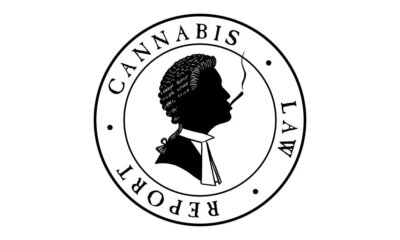
 California Cannabis Updates1 year ago
California Cannabis Updates1 year agoAlert: Department of Cannabis Control updates data dashboards with full data for 2023
-

 Breaking News1 year ago
Breaking News1 year agoConnecticut Appoints The US’s First Cannabis Ombudsperson – Yes there is a pun in there and I’m Sure Erin Kirk Is Going To Hear It More Than Once!
-

 best list12 months ago
best list12 months ago5 best CBD creams of 2024 by Leafly
-

 Business10 months ago
Business10 months agoEU initiative begins bid to open access to psychedelic therapies
-

 Bay Smokes1 year ago
Bay Smokes1 year agoFree delta-9 gummies from Bay Smokes
-

 cbd1 year ago
cbd1 year agoNew Study Analyzes the Effects of THCV, CBD on Weight Loss
-

 California1 year ago
California1 year agoMay 2024 Leafly HighLight: Pink Runtz strain
-

 autoflower seeds10 months ago
autoflower seeds10 months ago5 best autoflower seed banks of 2024 by Leafly




